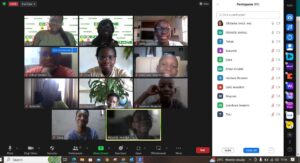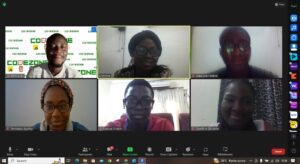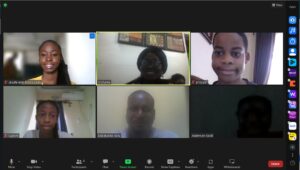Recruiting the right talent is crucial to an organization’s success, however, recruitment mistakes occur in the process that lead to poor hires, increased turnover, and wasted resources. At Emerald Zone, we understand the importance of refining recruitment strategies to ensure companies attract, select, and retain top talent. In this blog, we’ll explore some of the most common recruitment mistakes and how to avoid them to build a stronger, more successful team.
- Failing to Define the Job Role Clearly
One of the biggest mistakes companies make is not providing a clear and accurate job description. When roles and responsibilities are poorly defined, it can lead to confusion during the hiring process and result in hiring the wrong candidate.
How to Avoid This:
• Create Detailed Job Descriptions: Clearly outline the responsibilities, expectations, and skills required for the position. Ensure that the job description reflects the actual duties of the role, and avoid vague terms like “other duties as assigned.”
• Collaborate with Team Members: Involve the team members who will work closely with the new hire to ensure the job description aligns with the day-to-day responsibilities.
A well-defined job description will attract candidates who are genuinely qualified and reduce the risk of hiring mismatches.
- Overlooking Cultural Fit

Culture Fit
While technical skills are important, many companies make the mistake of focusing solely on qualifications and experience while overlooking whether a candidate is a good cultural fit. Hiring someone with the right skills but who clashes with the company’s values or team dynamics can lead to poor performance and high turnover.
How to Avoid This:
• Assess Cultural Alignment: During the interview process, assess candidates’ values, work ethic, and communication style to ensure they align with your company’s culture.
• Ask Behavioral Questions: Use behavioral interview questions to gauge how candidates handle situations that align with your company’s values, such as teamwork, leadership, and problem-solving.
Hiring for both skills and cultural fit ensures that the new hire will be able to thrive in the company environment.
- Rushing the Hiring Process
Another one of the recruitment mistakes is rushing the recruitment process due to pressure to fill a position quickly. A hurried process can lead to overlooking red flags, not thoroughly vetting candidates, and making hasty decisions that result in poor hires.
How to Avoid This:
• Plan Ahead: Rather than waiting until a position becomes vacant, start building a talent pipeline early. This way, you’ll have qualified candidates lined up when a position opens, reducing the urgency to fill the role immediately.
• Take Time for Thorough Interviews: Even if you’re on a tight timeline, don’t cut corners in the interview process. Ensure you take the time to interview candidates thoroughly, check references, and assess their fit for the role and company.
Taking a strategic approach to hiring will help you avoid costly mistakes and ensure the right candidate is chosen.
- Relying Too Heavily on One Source for Candidates

Many companies make the mistake of limiting their talent search to one or two platforms, such as LinkedIn or job boards. This can significantly reduce the diversity and quality of candidates, as you may be missing out on highly qualified individuals who are active elsewhere.
How to Avoid This:
• Diversify Your Sourcing Channels: Use a variety of recruitment channels, including social media, employee referrals, networking events, and niche job boards. Leveraging multiple platforms can increase your reach and attract a more diverse pool of candidates.
• Build an Employee Referral Program: Employee referrals are often one of the best ways to find high-quality candidates. Encourage your employees to refer qualified individuals, and offer incentives for successful hires through this method.
By diversifying your sourcing strategy, you open your company to a wider range of talent, improving your chances of finding the right fit.
- Neglecting the Candidate Experience
A poor candidate experience can damage your employer brand and cause qualified candidates to withdraw from the hiring process. Common mistakes include unclear communication, long response times, and lack of feedback, all of which frustrate job seekers.
How to Avoid This:
• Communicate Clearly and Frequently: Keep candidates informed at every stage of the recruitment process. Whether it’s acknowledging their application or providing updates after interviews, clear communication helps maintain candidate engagement.
• Streamline the Process: Avoid dragging out the hiring process with multiple rounds of interviews and lengthy decision-making periods. Keep it concise, efficient, and respectful of candidates’ time.
• Provide Constructive Feedback: If a candidate isn’t selected for the position, provide constructive feedback when possible. This helps them feel respected and maintains a positive relationship in case of future opportunities.
Focusing on candidate experience not only helps you secure top talent but also builds your reputation as an employer of choice.
- Skipping Background and Reference Checks

Reference Check
In the rush to hire, some companies may overlook important steps like background and reference checks. This can lead to hiring individuals who may not have the qualifications or work ethic they claimed during the interview process, which can result in future problems for the organization.
How to Avoid This:
• Conduct Thorough Background Checks: Always verify a candidate’s credentials, including education, employment history, and criminal record (where applicable). Ensure that the information they’ve provided matches up with what’s on their resume.
• Request and Follow Up on References: Ask candidates to provide professional references and make sure to follow up with those references. This gives you valuable insight into the candidate’s past performance, work ethic, and suitability for the role.
Recommended Read: Best Practices for Hiring Managers on Effective Recruitment
- Focusing Only on Active Candidates
Many companies focus solely on candidates who are actively applying for jobs, overlooking passive candidates who may not be actively seeking new opportunities but could be a perfect fit. Passive candidates often make up a significant portion of the talent pool and can bring valuable skills to your organization, this is another on of the recruitment mistakes.
How to Avoid This:
• Engage Passive Candidates: Use platforms like LinkedIn to identify and engage passive candidates. Regularly network, attend industry events, and nurture relationships with professionals in your field. Offering attractive opportunities and demonstrating your company’s strengths can encourage passive candidates to consider joining your team.
• Promote Employer Branding: Maintain a strong employer brand that positions your company as a great place to work. Passive candidates are more likely to consider an opportunity from a company they admire or have heard positive things about.
Tapping into the passive candidate market allows you to access high-quality talent that may not be available through traditional job postings.
Recruitment mistakes can cost companies time, money, and talent. However, by avoiding these common pitfalls and implementing thoughtful, strategic recruitment processes, you can significantly improve your chances of hiring the right candidates who will contribute to your organization’s success.
At Emerald Zone, we specialize in helping businesses avoid these recruitment missteps. Whether you need help refining your job descriptions, streamlining your hiring process, or sourcing top talent, our team of recruitment experts is here to support you. Contact us today to learn how we can help you build a successful recruitment strategy that attracts the right talent for your business. Follow is on our social media platforms Instagram, LinkedIn, Facebook, YouTube, TikTok








